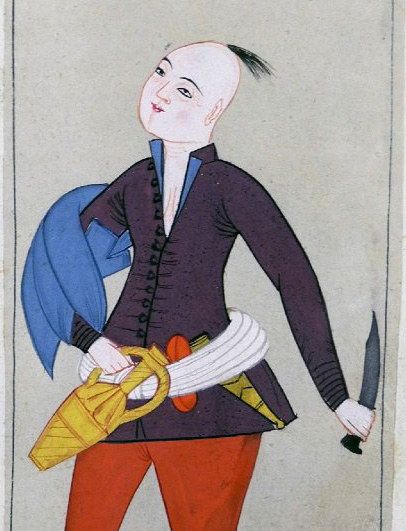The yelek is a hip-length jacket that men wore over their gomlek and zıbın and under their belt and overcoat as a formal layer. It was a less cumbersome, less fabric-intensive, and therefore less high-status replacement for the kaftan. Soldiers, cooks, baristas, porters, and other men who worked with their hands wore yeleks, but so did elegant young men and respectable older men.
“Yelek” is commonly translated as the short vest or overjacket worn by both men and women, and it certainly came to mean this in later centuries. However, analysis of descriptions of 16th-century escaped slaves’ clothing shows that the yelek was worn under an overcoat, not as an overcoat.
So what was the vest or overjacket called? We don’t know. Yeleks do appear in women’s inventories, and while women sometimes own traditionally male items that they inherited from a male relative, there are too many yelek-owning women for the yelek to be solely a male formal underlayer. Was the female jacket a yelek, while the male jacket was something else? Did “yelek” change its meaning from the first half of the century to the end of the century, moving from an underlayer to an overlayer? More research needs to be done.




